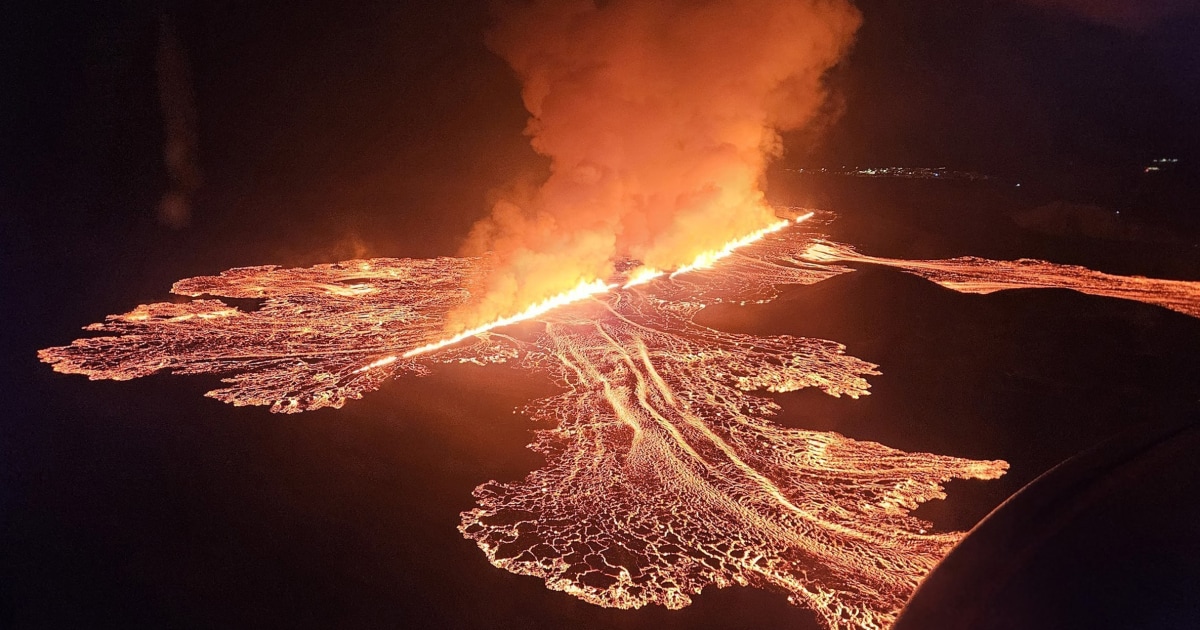A volcano near Iceland’s capital erupted late on Wednesday for the seventh time in a year, spewing fountains of lava and smoke, the country’s meteorological office said, but there were no disruptions to air traffic or infrastructure.
The eruption started with little warning at 11:14 p.m. local time Wednesday and created a fissure just under two miles long. The activity is estimated to be considerably smaller than the previous eruption in August, Iceland’s meteorological office that monitors seismic activity said.
Social media livestreams from the area showed glowing hot lava in bright yellow and orange shades shooting up into the night sky.
The first signs of an eruption were recorded just 45 minutes before a massive ground fissure, was opened by magma forcing its way through the earth’s crust, Iceland’s meteorological office said.
Authorities had previously warned of volcanic activity as magma accumulated beneath the Reykjanes peninsula, some 20 miles southwest of the capital Reykjavik, where the most recent eruption ended only on Sept. 6. However, there had been no noticeable increase in seismic activity in recent weeks, the meteorological office said.
“In the big picture, this is a bit smaller than the last eruption, and the eruption that occurred in May,” Magnús Tumi Guðmundsson, a professor of geophysics who flew over the scene with the Civil Protection agency to monitor the event, told the national RUV broadcaster.
The outbreaks on the Reykjanes peninsula, known as fissure eruptions, have not directly affected the capital city and do not cause significant dispersals of ash into the stratosphere, avoiding air traffic disruption.
Reykjavik’s Keflavik Airport said on its website that flights were unaffected and no crucial infrastructure was in danger, but the Blue Lagoon, a luxury geothermal spa resort, had shut down and evacuated its guests, RUV said.
The nearby fishing town of Grindavik, home to nearly 4,000 residents before an evacuation order in December last year, remains mostly deserted due to the periodic threat from lava flows.
There was no indication that lava was flowing towards the town, but some 50 houses occupied by people who have returned were evacuated, the civil protection agency said in a statement.
“Grindavík is not in danger as it looks and it is unlikely that this crack will get any longer, although nothing can be ruled out,” Magnús Tumi said.
Iceland, with its 400,000 inhabitants, sits above a volcanic hot spot in the North Atlantic and averages one eruption every four to five years. The most disruptive in recent times was the 2010 eruption of the Eyjafjallajokull volcano, which spewed clouds of ash into the atmosphere and disrupted trans-Atlantic air travel for months.
Lying dormant for 800 years, the geological systems in the area reactivated in 2021 and have since erupted at rising frequency, with the latest outbreak being the sixth so far in 2024.
Experts have warned that Reykjanes is likely to experience repeated volcanic outbreaks for decades, possibly even centuries.


Leave a Reply